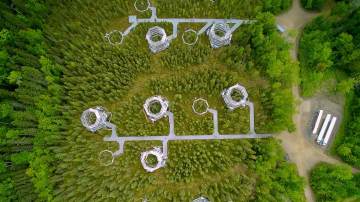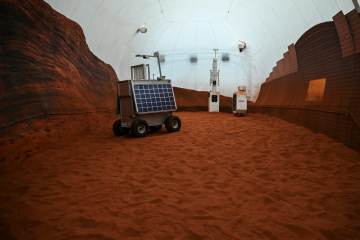See the full schedule for our EAS Seminar Series, with discussion topics such as Solid Earth Sciences, Planetary Science, and Astrobiology.
Upcoming graduate thesis and dissertation announcements.
Click here for a full list of upcoming events.
Recent News

Ali Sarhadi and his research team at GT's Climate Risk and Extreme Dynamics Lab are focused on a phenomenon called hurricane-induced compound flooding — hurricanes fueled by a warming climate.

Professor Sven Simon is working to uncover critical information to support the rapid analysis of measurements from NASA's Europa Clipper mission.

Researchers analyzed data from 10, yurt-like test chambers in a natural boreal spruce bog in northern Minnesota.

Humanity’s drive to explore has taken us across the solar system, with astronaut boots, various landers and rovers’ wheels exploring the surfaces of several different planetary bodies.
Upcoming Events
Seminars are held on Thursdays from 11:00 AM-12:00 PM (except where noted) virtually or in the Charles H. Jones Auditorium (L1205) in the Ford ES&T Building. For more information, please contact the Main Office at (404) 894-3893 or the speaker host (listed below).
Organizers: Ali Sarhadi, Shi Sim, and Nisaa Buchanan


